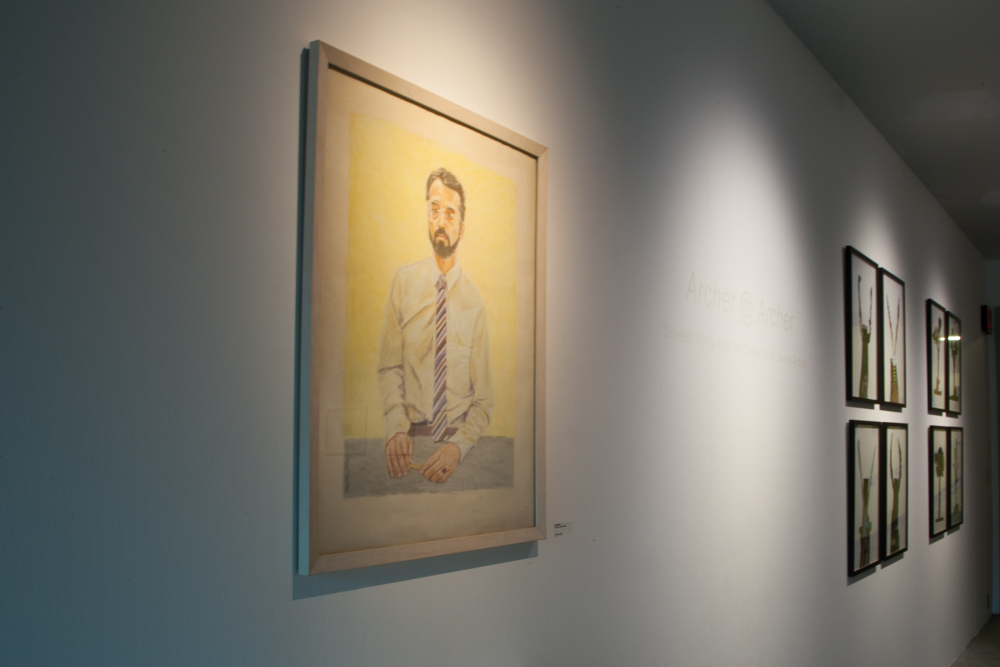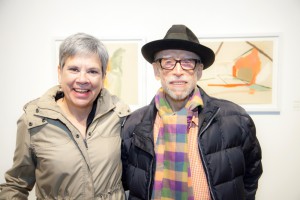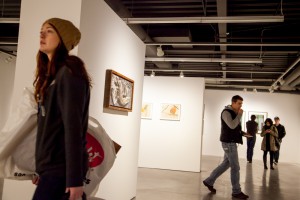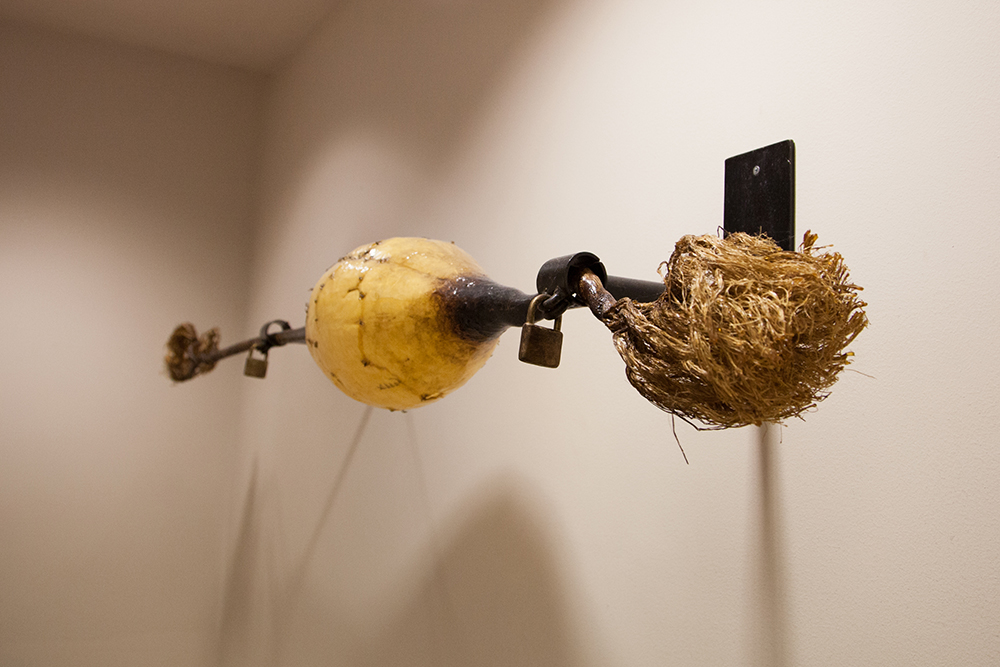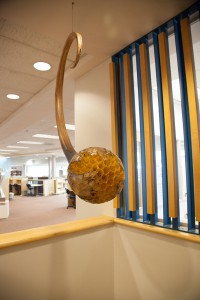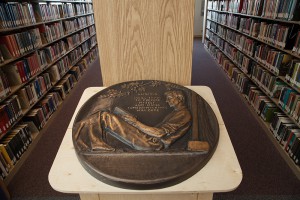Holiday Penguin Pantry
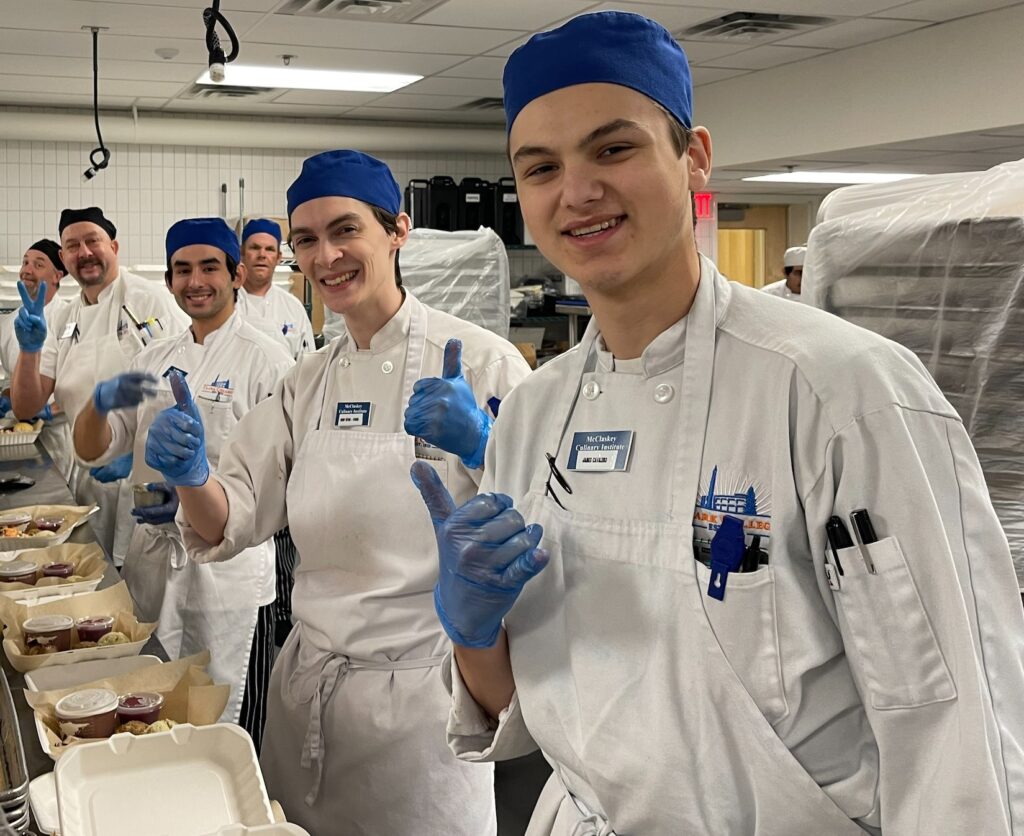
If you’ve ever had to plan, shop for, and prepare a holiday meal that included turkey with all the trimmings, imagine the work it takes to prepare Thanksgiving dinner for 450 people!
That is exactly the task undertaken by students and instructors in Clark’s Cuisine program and Professional Baking & Pastry Arts program. They prepared holiday meals for students and their families—a total of 450 people. The meals will be distributed during the Penguin Pantry’s November drive-through pantry pickup.
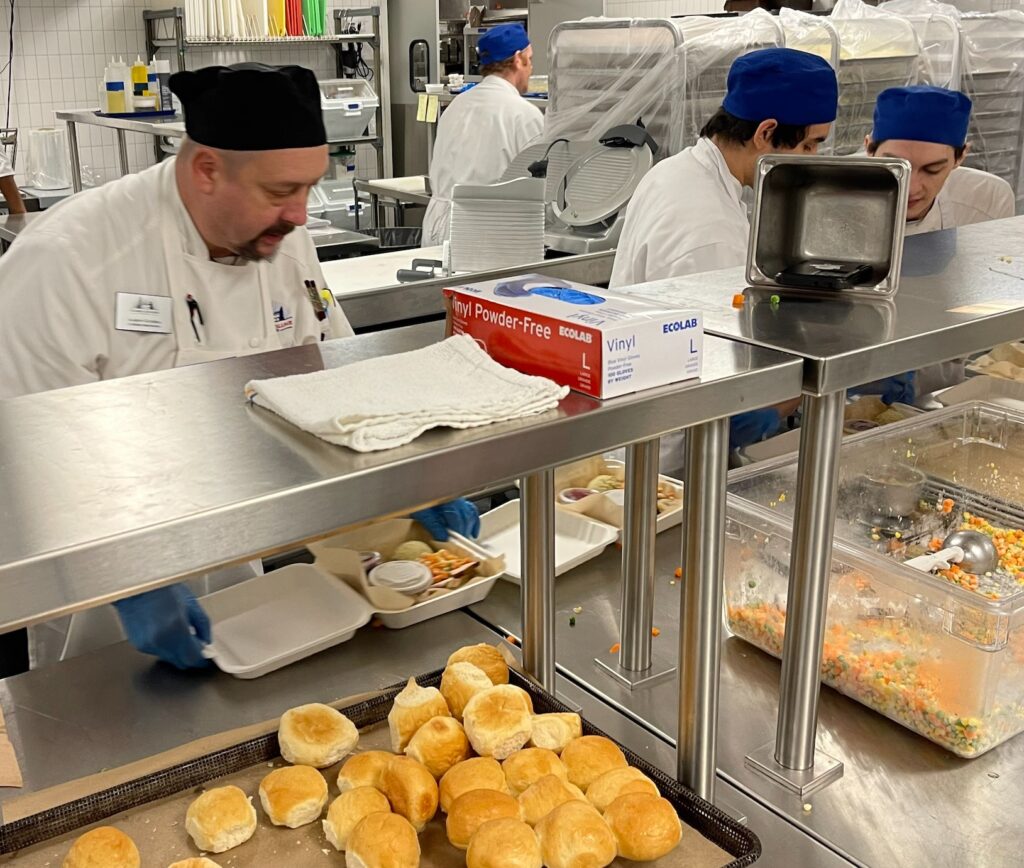
To demonstrate the enormity of the task, Chef Aaron Guerra (above) shared his shopping list: 142 pounds of turkey breast, plus four 18-to-20-pound turkeys to make stock and gravy. Add to that a mountain of potatoes. (How many pounds of potatoes does it take to make mashed potatoes for 450 people?) Don’t forget the must-have side dishes: gravy, dressing, cranberry-orange sauce, and vegetables.
Alison Dolder, head of the Professional Baking & Pastry Arts program, supervised her students in baking 450 dinner rolls and 450 fruit bars for dessert. Last year, her students made full-size pies for the holiday pantry, but packaging slices of pie without them looking messy made her rethink the dessert menu.

Dolder said, “This year, students made three varieties of fruit bars: apple, marionberry, and raspberry. They are as delicious as a slice of pie—and they hold together much better. We’ll have the full-size pies for the culinary kiosk sales next week.”
Cuisine students assembled the completed meals in a production line. The boxed meals are being stored in a cooler until Penguin Pantry distribution day from 10 a.m. to 2 p.m. on Tuesday, November 21.
The Penguin Pantry distributes food to students monthly, but in November, the distribution also includes these holiday meals.
Director of Student Life Sarah Gruhler, who supervises Penguin Pantry, said, “Students really appreciate the homemade food made by our students. They love all the extras—from a turkey dinner to laundry detergent to Safeway gift cards. These extras the pantry provides allow students to use their resources in other ways—like paying their electric bill. We don’t want students having to choose between food or electricity and heat.” Gruhler added, “Penguin Pantry helps ease the financial burden of our students.
She demonstrated the need the pantry provides for financially stretched students and their families. The pantry received a bonus shipment of fresh dairy, frozen meat, and meal kits from Clark County Food Bank. Over two days this week, Penguin Pantry did two “pop-up” distributions to get this perishable food to students in a timely manner.
She said, “We gave out almost 2,000 pounds of food in two days.”
If you would like to give specifically for holiday meals for students, donors can give via Clark College Foundation online.
About Penguin Pantry

Penguin Pantry marked its fifth year in July. The pantry supports a healthy college community by reducing hunger and food insecurity on campus and connecting students with essential resources. The pantry has become an important resource to help Clark College students stay on the path to graduation. The global pandemic, inflation, and skyrocketing prices have created more barriers for students trying to stay in school and complete their degrees.
During the 2022-23 academic year, the pantry served:
- 511 Individual students
- 1,863 family members of students
- 1,243 boxes of food distributed
- 31,000 pounds of food distributed
How students can request a monthly pre-packaged food box:
1. Log into MyClark@Clark
2. Look for the Penguin Pantry Order Form (right navigation) under Get Started
3. Fill out the form completely, and submit
4. Your confirmation email with a pick-up date/time.
If students need immediate assistance with food, housing and/or other basic needs, please visit the following Clark County community resources:
How to donate to Penguin Pantry:
- Online: Give online with Clark College Foundation’s online giving form and choose ‘Penguin Pantry’ from the drop-down menu.
- By mail: Mail your check/money order to: Clark College, Attn: Cashier’s Office (PUB 153), 1933 Ft. Vancouver Way. Write the check to “Clark College” and write “Penguin Pantry” in the comments area.
Learn more at https://www.clark.edu/campus-life/student-support/penguinpantry/index.php
